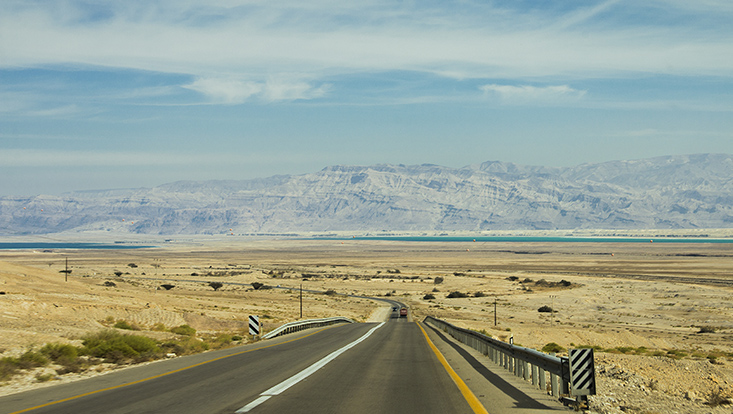How climate change is turning enemies into partners
30 April 2019, by Dr. Juan Miguel Rodriguez Lopez, CEN

Photo: unsplash.com/V.Leno
In the region surrounding the River Jordan, the conditions are arid – a fact that is already a problem for the countries there, and one that climate change will only make worse. When two countries share the same river, such crises can often only be resolved by finding cross-border solutions. But what do you do when your neighbor is also your sworn enemy?

In the Jordan Valley region, Jordan and the Palestinian territories share borders with Israel, and the three parties have engaged in violent conflicts for decades. For many of those in charge, the official policy is simple: “no cooperation” with the enemy. And the same applies to research, at least in terms of working together directly. Israelis and Palestinians cannot officially conduct research or publish their findings together; this is only tolerated when a third person from a neutral country is also involved.
Nevertheless, something has to be done; if not, the consequences for all three countries could be disastrous. In response, our team at the CEN, the Center for Earth System Research and Sustainability at Universität Hamburg, together with experts from the University of Tübingen, accompanied a one-of-a-kind process under extremely tense conditions.
We invited prominent representatives of the research community, ministries and non-governmental organizations to a meeting in the region. As a first step, all of the participants from each country were asked to discuss among themselves and identify their country’s most pressing environmental problems. All participants remained anonymous: due to fears of reprisals against the “collaborators,” we were only allowed to cite the names of their respective institutions.
We then asked the experts to assess the “tipping points” for their region: points at which a relatively small change can set off a sudden and massive – not to mention irreversible – reaction in the environment. Such points are like the proverbial straw that broke the camel’s back.
The three countries are so close that solo efforts are futile
In Jordan, the experts cited the arid grazing land, where livestock herds have traditionally fed. The goatherds know that they have to constantly move on with their herds, so as not to endanger the dry soil’s sparse vegetation. But, as the participants reported, because of prolonged extremely dry conditions there is now less grazing land available, and the animals can’t wander far enough to find food. But if they graze too long on the same spot, they tear out the grass’ roots; if this goes unchecked, the plants have no chance to recover, and the grazing lands irretrievably become desert.
In turn, others reported on Prosopis juliflora, an introduced species of bush from South America that is now aggressively spreading throughout the region. In many areas, it has supplanted the flat indigenous vegetation, and draws so much water from the soil that it makes the arid conditions even worse. At small scales, the three neighboring countries are so close that pursuing solutions on their own is futile: if any of the three took focused measures to kill off the bush, Prosopis would simply be back again roughly three months later.
Now that the tipping points had been identified, we presented all findings to the group as a whole. Our hope: if the different countries cited the same problems, in the future they might be willing to work together on them more intensively, at least unofficially.
It was a complete success! Beyond water shortages, all three countries cited the grazing land, aggressive introduced plants, and agriculture as the greatest risk factors, together with four additional points. The major similarities in their findings even surprised us – and showed the participants that many environmental problems can only be overcome through cross-border efforts.
Miguel Rodriguez Lopez
Dr. Juan Miguel Rodriguez Lopez is an economist and political scientist, and is currently exploring conflicts and cooperation in connection with climate change at the CEN.
Publication: Juan Miguel Rodriguez Lopez, Katja Tielbörger, Cornelia Claus, Christiane Fröhlich, Marc Gramberger and Jürgen Scheffran (2019): A Transdisciplinary Approach to Identifying Transboundary Tipping Points in a Contentious Area: Experiences from across the Jordan River Region
Newspaper: This article was first published as a guest article in the Hamburger Abendblatt as part of a monthly series on climate research. Find all articles of the series here.


